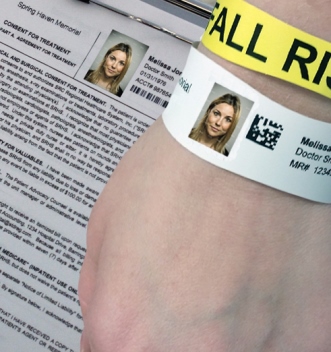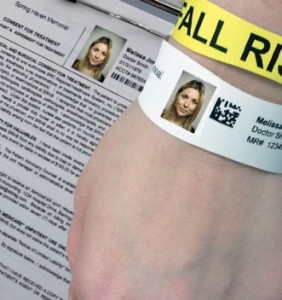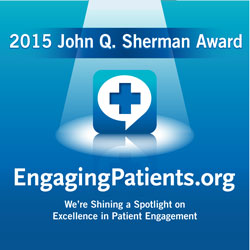
She was admitted last night from the Emergency Department and is scheduled for cardiac catheterization today. Her chart says she is 84 years old, resides in long-term care and her name is Annie Smith. It’s a hectic morning on your medical unit with patients in all of the 24 beds. It promises to be “one of those days.” So when the orderly arrives to take Annie Smith to the cardiac lab the nurse quickly gathers the chart and heads for Annie’s room.
What happens when they arrive at the patient’s room?
In Search of a Standardized Approach
The answer to this question is highly varied, often dependent on individual clinician habits, design of the care model within the organization, and the presence or absence of a standardized approach to patient identification.
S adly, the literature shows us that our lack of systematic methods for the most basic aspect of safety leads to errors and even death simply because the wrong patient receives a treatment, medication or other intervention that was intended for someone else.
adly, the literature shows us that our lack of systematic methods for the most basic aspect of safety leads to errors and even death simply because the wrong patient receives a treatment, medication or other intervention that was intended for someone else.
If Annie Smith is like many folks in our hospitals, hesitant to ask questions or push back when something does not seem right she may be in trouble here. Yet we are told there is a new “blockbuster drug” in healthcare, called patient engagement.
Boundless Expectations
Expectations are high that patients will engage effectively with clinicians and that clinicians will partner with patients to achieve the best outcomes possible. One of the basic elements in engagement is for clinician and patient to know their correct identities.
In our recent report, Patient Engagement: Two Words with Big Expectations, we explore the research related to use of the term and speak to the three critical factors affecting the concept of patient engagement and how it is operationalized at the point of care — (1) Establish clear messaging, (2) Support skill development for both clinicians and patients, (3) Use evidence-based tools to improve safety.
Examples to Emulate
For a clinician and patient to engage by correctly identifying one another seems so obvious that one may wonder why it is not common practice in every organization.
It’s About the Culture
As an experienced clinician, I witnessed a simple but impressive display of the basic safety cross-check of correct patient identification at a Mayo Clinic. When patients were called forward for a test or lab work the staff member would say, “Please tell me your name,” and then, “Please tell me your date of birth,” as staff looked at the patient and referred back to the order in their hand. This practice was consistent and when staff was asked they explained, “This is the Mayo way.” Correct patient identification is embedded in the culture.
 Today, the healthcare community recognized an organization that has embraced the hard work to change their culture and standardize patient identification. At this year’s National Patient Safety Congress. North Shore Long Island Jewish was presented with the John Q. Sherman Award for Excellence in Patient Engagement. North Shore LIJ’s is a system-wide initiative impressively demonstrated all five criteria to win the award.
Today, the healthcare community recognized an organization that has embraced the hard work to change their culture and standardize patient identification. At this year’s National Patient Safety Congress. North Shore Long Island Jewish was presented with the John Q. Sherman Award for Excellence in Patient Engagement. North Shore LIJ’s is a system-wide initiative impressively demonstrated all five criteria to win the award.
North Shore LIJ sought to reduce variation in practice throughout their network, to address near misses from misidentifying patients. Through collaboration with patients, families and staff throughout their network, they designed their engagement strategy around Eight Patient Rights and Eight Critical Elements for each patient encounter.
A Call to Action
One of the criteria for the John Q. Sherman award is the ability for other providers to replicate successful patient engagement strategies. Read their upcoming post and take from their journey examples that you can replicate within your organization. It is time we all expect engagement to begin by knowing we are addressing the right patient.




